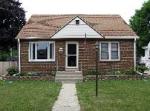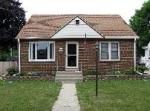 Adjustable rates mortgages have gotten a bad rap but with the reverse mortgage they should be considered. While considered the most desirable, a fixed rate is not necessarily the best option. Let’s discuss the advantages and disadvantages of each.
Adjustable rates mortgages have gotten a bad rap but with the reverse mortgage they should be considered. While considered the most desirable, a fixed rate is not necessarily the best option. Let’s discuss the advantages and disadvantages of each.
First you need to know how the loan amount is determined. With the reverse mortgage the Principal Limit or maximum loan amount at the time of origination is determined by the home appraised value or FHA’s Maximum Claim Amount ($625,500 through 2010), the age of the borrower, and the Expected Interest Rate. The Expected Interest Rate is only used to determine the loan amount it is not necessarily the same as the interest rate on the loan.
Currently the Expected Interest Rate on the Fixed Rate is lower than on the Adjustable Rate therefore the initial Principal Limit on the Fixed Rate option is higher than the Adjustable Rate option. But this still does not make the Fixed Rate always the best option.
The Adjustable Interest Rate has the option of receiving funds as monthly payments, a line of credit, lump sum or a combination of these. All the funds need to be drawn as a lump sum to receive the best interest rate with the Fixed Rate option. While HUD requires that lenders offer the monthly and line of credit options with Fixed Rate, the interest rate would be so high that these options are never even discussed with the Fixed Rate.
Jerri needed some extra funds and was doing a reverse mortgage to meet these needs. Her situation was she didn’t have a current mortgage and she was already receiving Medical Assistance (Medicaid in MN).
When we compared the Fixed Rate to the Adjustable Rate based on her home value and age, Jeri would receive more funds with the Fixed Rate. However if she would choose the Fixed Rate option she would have to draw all the funds up front. Drawing all the funds up front would mean that unless she spent them in the month they were received she would lose her Medical Assistance.
While not receiving as much available upfront, by choosing the Adjustable Rate she could take out what she needs immediately in the lump sum and leave the balance in a line of credit and draw it when she needs it. Being the Line of Credit grows at a half percent more than the interest rate of the loan, she could have more funds available to her in the future. (Loans originated after the Fall of 2010 the growth rate is 1.25% more than the interest rate of the loan, i.e. if the interest rate is 2.5% the growth rate would be 3.75%.)
Jeri chose the Adjustable Rate so she would not lose her Medical Assistance yet have the funds she needs to meet her needs.
Tom wanted to improve his cash flow and found that making the mortgage payments on his current mortgage was a challenge. With the reverse mortgage Tom’s cash flow would improve because his current mortgage would be paid off eliminating his $1,200 monthly payments. And with the reverse mortgage monthly payments are not required. This means he has the $1,200 that he was paying in mortgage payments to no use as he needs.
In his situation the Fixed Rate would pay off his current loan and provide Tom about $8,000 more in a lump sum.
When we compared the Adjustable Rate option to the Fixed Rate, there was about $10,000 less available with the Adjustable Rate option. And in order to pay off his current loan Tom would need to bring about $2,000 to the closing. (The reverse mortgage lender needs to be in first lien position so all current loans need to be paid off with the reverse mortgage.)
In comparison Tom would receive $8,000 additional funds at closing with the Fixed Rate versus having to bring $2,000 to the closing with the Adjustable Rate.
Being Tom is not on Medical Assistance and he also wanted some funds upfront to pay off some credit card debt the Fixed Rate would not negatively impact him.
When Tom met with the reverse mortgage counselor he was told that if he could come up with the $2,000 the adjustable rate would be able to be done and they would have more funds when the reverse mortgage was being paid off. This is not necessarily the case.
On the surface when looking at the Estimated Amortization Schedule it does appear that the remaining equity would be higher. However it is speculative to guess what the interest rate is going to be on the Adjustable Rate option in the future. And one needs to keep in mind that the Amortization Schedule is an estimate based on the current interest rate.
Currently the initial rate on the Adjustable Interest Rate is lower than the Fixed Interest Rate so it may look more favorable. Unfortunately we don’t know if the Adjustable Rate will remain as low as it currently is, in other words it’s not guaranteed to remain the same. So if the interest rate jumps high at some point in time in the future, the remaining equity could be the same or less than what could be available from the Fixed Rate.
The Home Equity Conversion Mortgage (HECM), currently the only reverse mortgage option available in Minnesota, is insured by HUD. HUD guarantees the funds are available to the borrower, helps keep the interest rate lower, allows for the funds in the Line of Credit to grow and protects the borrower as a non-recourse loan. This means there is no personal liability to the borrower or the estate as long as they are not retaining ownership.
 In Jeri’s situation by doing the Adjustable Rate while she may not receive as much up front, she will have the funds guaranteed and the growth rate on the line of credit. Additionally even if the reverse mortgage interest rate does go up, when the loan is due and payable if the loan balance is higher than the home can be sold for, she or her estate will not need to come up with the difference (the non-recourse protection).
In Jeri’s situation by doing the Adjustable Rate while she may not receive as much up front, she will have the funds guaranteed and the growth rate on the line of credit. Additionally even if the reverse mortgage interest rate does go up, when the loan is due and payable if the loan balance is higher than the home can be sold for, she or her estate will not need to come up with the difference (the non-recourse protection).
In Tom’s situation, while when the loan is due and payable he may or may not have more equity if he did the Adjustable Rate, with the Fixed Rate he is receiving $8,000 at closing rather than having to come up with $2,000. By using the $8,000 wisely, i.e. paying off credit card debt with very high interest rates and then saving the remainder in a saving account that may earn a little interest, he has the reverse mortgage interest rate guaranteed.
As was the case when the Fixed Rate was first introduced, at some point in the future the Expected Interest Rate on the Adjustable may be lower than the Fixed Rate and provide more funds to the borrower. Not having a crystal ball we need to review each interest rate option and look at each situation as an individual circumstance without judging whether the Fixed Rate or the Adjustable Rate is better. One shoe doesn’t fit everyone and one reverse mortgage interest rate option does not fit everyone. The Adjustable Interest Rate may fit better for some circumstances and the Fixed Interest Rate better for others.
© 2010 Beth Paterson, Beth’s Reverse Mortgage Blog, 651-762-9648
This material may be re-posted provided it is re-posted in its entirety without modifications and includes the contact information, copyright information and the following link: http://wp.me/p4EUZQ-hh
Related Articles:
Blog posts’ information is current as of date post published, program is subject to change in in the future. Contact us for current information, 651-762-9648.
This site or the information provided is not from, or approved by, HUD, FHA, or any US Government or Agency.
 This past week I had the pleasure of being a guest on the radio show, “The Unexpected Caregiver” hosted by Kari Berit. We covered the basics of reverse mortgages to clarify the facts and share some stories of Minnesota reverse mortgage borrowers and how they have benefited from a reverse mortgage. Rather than writing this blog post I thought I’d share the link to the show for your listening: The Unexpected Caregiver – The Reverse Mortgage Basics with Beth Paterson – Part 1
This past week I had the pleasure of being a guest on the radio show, “The Unexpected Caregiver” hosted by Kari Berit. We covered the basics of reverse mortgages to clarify the facts and share some stories of Minnesota reverse mortgage borrowers and how they have benefited from a reverse mortgage. Rather than writing this blog post I thought I’d share the link to the show for your listening: The Unexpected Caregiver – The Reverse Mortgage Basics with Beth Paterson – Part 1


















